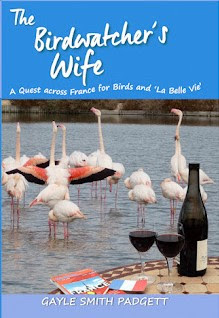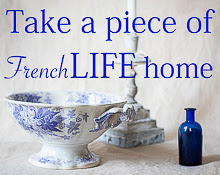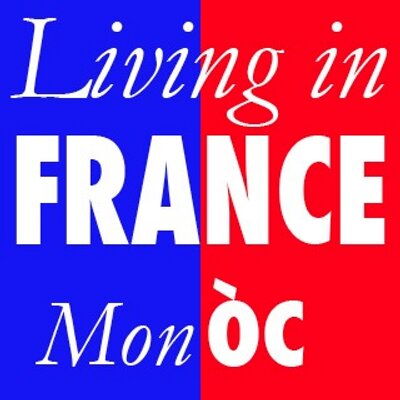Wednesday, March 30, 2011
Get in Touch with Your Inner Gypsy
Deep in the heart of the Luberon, one of Provence's loveliest regions, you'll find a hotel that rivals the finest auberges and inns worldwide. Created in and around an 18th-century farmhouse, La Bastide de Marie is snuggled within its own 18-acre vineyard, with 14 guest rooms (all with views of the vines), one freestanding villa, two swimming pools, an elegant indoor/outdoor restaurant and stunning scenery. Once you announce yourself and amble through the heavy swinging gates, you're cocooned in total luxury. French Country antiques abound, enormous vases overflow with fresh-cut flowers, Picassos hang on the walls. Owners Jocelyn and Jean-Louis Sibuet (who also operate hotels in Paris, Megeve, Lyon and Ramatuelle/St. Tropez) and their lovely staff cater to your every whim. Keep your windows open and you’ll be lulled to sleep by chirping cigalles, the sweet background music that signals summer in Provence.
And now there's another reason to visit La Bastide de Marie: a brand-new one-bedroom green-and-white Gypsy-style caravan (or roulotte), fitted out in complete luxury and available by the night. The caravan is being officially unveiled this month.
The 17-square-meter (183-square-foot) roulotte was designed, Jocelyn says, as a rural boudoir. "From the outside you'd never guess what it holds," she told me. "This room for wanderers has been especially laid out to recreate the fairytale atmosphere of gypsy nights. It’s a little wooden dwelling that inspires thoughts of travel, a bit of Bohemian chic in the heart of the vineyard!”
The caravan sleeps two. The rate of 450€ per night (490€ in high season) includes breakfast, afternoon tea and lunch or dinner with wine from the adjacent Domaine de Marie vineyard.
For info on La Bastide de Marie and the caravan, click here.
For info on other Sibuet Hotels, click here.
Photos (click to enlarge): The Gypsy-style caravan at La Bastide de Marie welcomes its first guests this month. Caravan interior. Setting up for lunch. One of 14 guestrooms in the main building. Bastide de Marie and its surrounding vineyards. Photos: La Bastide de Marie / Rights reserved.
Sunday, March 27, 2011
Gifts for Your Favorite Francophile
How cute is this pillow? Before you look at the price, keep in mind it's entirely hand embroidered. The light cotton cover buttons off for cleaning and it's accented with black velvet piping. Other countries--America, Ireland, Italy--and all sorts of popular U.S. vacation destinations are available in the series too. Check them out on the Whispering Pines website here. What's that you say? $149 for a pillow is trop cher? Then try Uncommon Goods, where silk-screened cotton dishtowels, based on the same map-of-France theme, are just $20 each. And GlassesandPillows.com has 15-ounce dishwasher-safe drinking glasses with a similar pattern for $13 each.
Tuesday, March 22, 2011
1,000 Restaurants in Michelin Spring Promo
Yesterday Michelin launched its springtime promotion called Printemps du Guide Michelin. Until June 21, approximately 1,000 restaurants in France will be offering specially priced menus, events such as gourmet workshops and cooking classes and discounts on both fixed-price menus and à la carte dishes. The specials are available to anyone who presents the Pass Printemps.
Many restaurants have also added surprises for customers such as signed menus, a free glass of Champagne or the chance to dine in the kitchen.
The list of participating restaurants and their offers are posted here. Meanwhile, there are two ways to get the Pass.
The Pass Privilège is inserted into copies of the 2011 Michelin Red Guide to France, commonly known as the Guide Rouge. This pass is also available via the “Restaurants du Guide Michelin France 2011” iPhone app and the Nokia OviCartes app. The Pass Privilège is good until June 21.
Or, you can get a Pass Découverte, valid until April 21, by downloading it free here.
The Pass Découverte is also inserted in the Paris, Lille, Marseille/Aix and Lyon editions of A Nous magazine and is available in more than 400 tourist offices throughout France
Both Passes--Découverte and Privilège--are valid for two people and can be used and reused in all participating restaurants. To get the special, simply show the pass upon arrival at the restaurant.
Reservations are required for gourmet workshops and recommended for all other Printemps specials.
Another new addition to the program this year is a smart phone application that enables users to locate nearby restaurants. Meanwhile if you use the pass and have a great experience, please let us know! For more info: printempsduguidemichelin.fr.
Friday, March 18, 2011
An Expert's Tour of Top Rhône Wineries
Philip and Jude Reddaway run a wine-tour company called La Madèlene Rhone Wine Holidays, based in a renovated 12th-century priory just outside Malaucène, between Mont Ventoux and the Dentelles de Montmirail in the Haut-Vaucluse. (Lonely Planet recently picked La Madelène as one of the four top places to stay around Avignon.) The Reddaway’s most-popular offering is a three-day Southern Rhône tour, with lodging, meals, wine pairings, wine education and visits to some of the region’s top domaines. They also offer one-day excursions, custom tours, chambre d’hôte overnight stays and specialty tours such as “Truffles and Wine” (Nov 30 to Dec 3, 2011). Because Philip knows where all the best wines and winemakers in the region are hiding, I asked him to share a few of his favorites with us. With one exception, all of these domaines welcome drop-in visitors during traditional tasting-room hours. Still, Philip cautions, it’s best to call ahead. To contact Philip directly, use: rhonewineholidays@googlemail.com.
I like to start by taking guests up into the Dentelles range to visit Domaine Mourchon. At around 400 meters, this Scottish-owned estate is regarded as probably the best producer in the Côtes du Rhone Villages Seguret AOC after only 12 years of production. Their Napa-style winery, perched on the side of the hill, is complemented by their respect for traditional wine making--wood is used sparingly. These are robust, sweetly ripe, herbal, mainly Grenache- based wines that shout “terroir.” The delightful owners, Walter and Ronnie McKinley, along with their daughter Kate and her partner Hugo, are extremely generous with their time and expertise.
For those with a sweet tooth, a visit to the caveau of Domaine des Bernardins in the village of Beaumes de Venise is essential. The Hall/Castaud family has been making wine here for five generations and theirs was the first to be awarded AOC status in 1943. While they make very quaffable reds, it’s the magnificent sweet Muscats that receive ecstatic feedback from our guests and get them reaching for their wallets. The classic Muscat is a deeper red/orange hue than a standard Beaumes de Venise, arising from a blend of 20% black Muscat grapes along with the usual white “Muscat a petit grain.” The result is an indulgent wine redolent of candy peel and orange flower water, unctuously sweet but with just enough acidity to keep it fresh. On a typical visit you will usually find son of the household Romain Hall, who will quietly but authoritatively talk you through the science (“mutage’) of how a Vin doux Naturel is made.
My next choice would be Domaine Goubert in the village of Gigondas. Here the Cartier family developed something of a maverick reputation from the 1970s onward; when everyone else was maturing wine in those vast old barrels called foudres, Jean-Pierre Cartier was using small Burgundian oak barriques. I’m not always a huge fan of new oak married with Rhône varietals but Jean-Pierre’s "Cuvée Florence” is a masterpiece of winemaking. We often buy magnums for our alfresco dinners at La Madèlene, recently the 2003, and use the bottle itself as a striking centerpiece. If we’re lucky, the eponymous Florence (daughter and only child of the house), hosts our visit. The village of Gigondas is full of other great addresses, notably Château St. Cosme and Domaine la Bouissière.
Choosing a favourite Châteauneuf winery is the hardest as we visit so many and all are so good. But visits to Domaine de la Solitude are always special. The Lançon family ancestors were part of the Avignon Pope’s court, a lineage reflected in the name of their top cuvée, Barberini. Whites and reds here can hit the highest notes: a 1978 classic cuvée I tasted last year was probably my finest tasting moment in the appellation. But it’s not just the wines that make for a sensational visit: in Châteauneuf, most vignerons grow grapes on small parcels of land throughout the AOC but the Lançon's family vines actually all surround the house. And there are parcels that include pre-phylloxera ancient vines. The private tasting room is a delight, book lined with oil paintings of the family and a framed legion d’honneur medal earned by a Lançon at the Battle of Waterloo. Heir apparent winemaker Florent Lançon delights in hosting grand tastings in this room, his good English peppered with some course Aussie expressions picked up whilst doing a winemaking “stage” there a few years back. In Châteauneuf, I also love to take guests to La Nerthe, Pegau, Nalys, Vatican, Roger Sabon and so many more!
Visiting my friend Philippe Gimel of Saint Jean du Barroux is not an easy exercise as he’s so hard to track down: he works out of an office in Caromb, his vineyard near Le Barroux and a cave in the corner of a cherry processing shed in Malaucène. Philippe is a genuine garagist (someone who makes very high quality wines in small batches), rendering powerful exotic wines of unusual quality from the humble Ventoux appellation. Thanks to Philippe’s energy, passion and über-smart marketing (he’s the only winemaker I know with his Facebook and Twitter details prominently shown on his label), these are fast becoming cult wines in such disparate places as California, Denmark and Hong Kong. I have not taken a guest to his humble shed who has not stumbled out two hours later after a marathon tasting, utterly charmed by both man and wine. If you can find him, Philippe is definitely one to watch! To reach Philippe, call 04-90-70-84-74.
Top photo: When you sign on for a tour, you'll stay at La Madelène, just outside the village of Malaucène. Bottom photo: a typical Provencale vineyard photographed by Patrick Morand.
Top photo: When you sign on for a tour, you'll stay at La Madelène, just outside the village of Malaucène. Bottom photo: a typical Provencale vineyard photographed by Patrick Morand.
Tuesday, March 15, 2011
Poppy Time!
You've seen them in photos and paintings: those shimmering fields full of glorious red poppies in Provence. (They're so gorgeous they actually stop traffic; people see them, pull over and spring from their cars, cameras and sketchbooks in hand.) Well here's your chance to experience them firsthand, with a well-known, fully bilingual artist/instructor as your guide. Oregon-based watercolor painter Jacqueline Newbold has two spaces left in her spring "Paint the South of France" workshop, May 9th to 19th, and it's timed perfectly to coincide with the blooming of the coquelicot. Not so into poppies? No worries--the itinerary features many of the most-popular sites in the region such as the 11th-century clinic where Van Gogh painted 143 canvasses, the ancient hilltop village of Les Baux, the Luberon region, Isle sur le Sorgue, vineyards, markets and more. All skill and experience levels are welcome. The price ($2,650) includes 10 nights lodging at the Hotel du Soleil in St. Remy, breakfasts and lunches, watercolor demos, mixed media and watercolor journaling techniques, critiques and local transportation. Jacqueline's website is here and all the trip info is here. To learn more and see more of her work, here's her blog, here's her Esty shop and here's her email.
Painting: Newbold's "Coquelicots de Provence" (watercolor, 20” x 24”)
Thursday, March 10, 2011
Lacroix Fabrics Inspired by South of France
French fashion house Christian Lacroix has introduced its first line of textiles for the home. The collection includes patterns such as Riviera, Feria and Arles (pictured), which features well-known city monuments. “As it was the first collection, I really thought it was important to make it happen in the south of France, because Mr. Lacroix was born in Arles,” creative director Sacha Walckhoff told the NY Times. The Times article has details on products, prices and ordering info...and you can see all the fabrics on the Designers Guild website here.
Labels:
ARLES,
CHRISTIAN LACROIX,
DESIGN AND DECOR,
PROVENCE,
THINGS TO BUY
Sunday, March 6, 2011
Book Now for "Secret" Palace Tour In English
Previously available only in French, a popular two-hour guided tour of the "Secret" Palais-des-Papes will soon be offered in English but only for a limited time. The Avignon landmark is one of the most-visited monuments in all of France. Construction began in 1335 and was completed in less than twenty years under the leadership of Pope Benedict XII and his successor Clement VI. With 15,000 square meters (161,000 square feet), the Popes’ Palace is the biggest Gothic palace in all of Europe--the equivalent of four Gothic cathedrals. The small-group "Secret Palace" tour provides a fabulous opportunity to discover many parts of the Palace that are normally closed to the public such as the baths, papal wardrobe, private chapel and staircases and corridors leading to gardens, terraces and private rooms. The tour in English will be offered Fridays at 3 p.m., from April 22nd to May 31st, and again from September 2nd to October 14th. The tour is not recommended for very small children or people with reduced mobility. Order your tickets (€19.50 per person) by clicking here or by calling +33(0)4 32 74 32 74. For complete Avignon Tourism info click here. For Palais-des-Papes info, click here.
Tuesday, March 1, 2011
Now I Want a Matisse on MY Terrace!
I happened on this photo and found the scene—the composition, dappled light, low-slung modern furniture, lush materials and, of course, the Matisse--just incredibly beautiful.
I had to know more!
The Brody House, in the Holmby Hills section of West Los Angeles, was commissioned by philanthropist art lovers Sidney and Frances Brody in 1949. It was designed by architect A. Quincy Jones and interior designer Billy Haines.
The house is 11,500 square feet on about 2.3 acres, with nine bedrooms and seven and a half bathrooms, a pool, a tennis court and a guest house. The Playboy Mansion is next door.
The Brodys moved in in 1951.
The following year, to fill a large white wall on this open-to-the-sky patio, the couple commissioned a 12 x 11-foot ceramic-tile Matisse mural called La Gerbe (The Sheaf).
Matisse worked on several different concepts before even knowing the exact dimensions of the wall and when the couple visited him at home in Cimiez (Nice), they apparently hated the design he proposed. Without wanting to insult him, they tried to persuade him to give it another shot but Matisse stood firm. Finally, his daughter and his assistant prevailed and he agreed to re-do the design.
You can read a wonderful detail-rich account of the whole process--how the piece was commissioned, created, transported and installed--written by Mrs. Brody here.
Ok now fast forward. Sidney Brody died in 1983. After Frances followed in 2009, at age 93, the house was put on the market, listed at $24.9 million. It sold seven months later, for just under $15 million, to "a local investor." Proceeds from the sale of the home benefited The Huntington, where Frances was a board member for 20 years.
Meanwhile the Brody’s famous art collection, which included works by Matisse, Giacometti, Moore, Braque, Degas and Vuillard, went to Christie's in New York, where it brought in almost $226 million at auction in May, 2010. Christies' Erin McAndrew tells me that makes it the most valuable single-owner collection ever offered at the prestigious New York auction house. Christies' chairman called the Brody Collection “one of the greatest private collections to come to market.”
(The most notable work of the collection, by the way, was a 1932 Picasso painting of his mistress Marie-Thérèse Walter, which had not been seen in public since 1961. Titled Nude, Green Leaves, and Bust, it sold for $106.5 million, which set a new world record for the most-expensive artwork ever sold at auction. The Brodys bought the painting in 1950, for $17,000, from the art dealer Paul Rosenberg.)
The Brodys' beloved Matisse mural, however, was bequeathed by the couple to the Los Angeles County Museum of Art (LACMA), where it’s now on permanent display. The LA Times reported that "the 1-ton work was hoisted by crane from the atrium it had occupied for more than 50 years, lifted over trees, and transported intact to the museum." Read more of the story on the museum's website here.
While it makes me a bit sad to think this graceful tableau--this beautifully composed, casually elegant room--now exists only in photos, it’s fun to wonder what the new owners have done with the space. And of course it’s wonderful to know that the Matisse will go on to delight multitudes for years to come, thanks to that day, almost 60 years ago, that a young Los Angeles couple with vision and taste met the monumental talent of a modern art master, nearing the end of his life on the Cote d’Azur.
By all reports, the Brodys couldn’t have loved their Matisse more. In her notes, which appear on the LACMA website here, Frances Brody writes: "The ceramic has been up since early August, 1955...Far from becoming tiresome, its simplicity of design never fails to bring warmth, gaiety, color and beauty to an area observed by all who pass through any part of the house. This is truly the heart of our home."
Photo of Brody House by Oberto Gili, from The Finest Rooms in America by Thomas Jayne (Monacelli Press, New York, November 2010).
Subscribe to:
Comments (Atom)




























































.jpg)






















